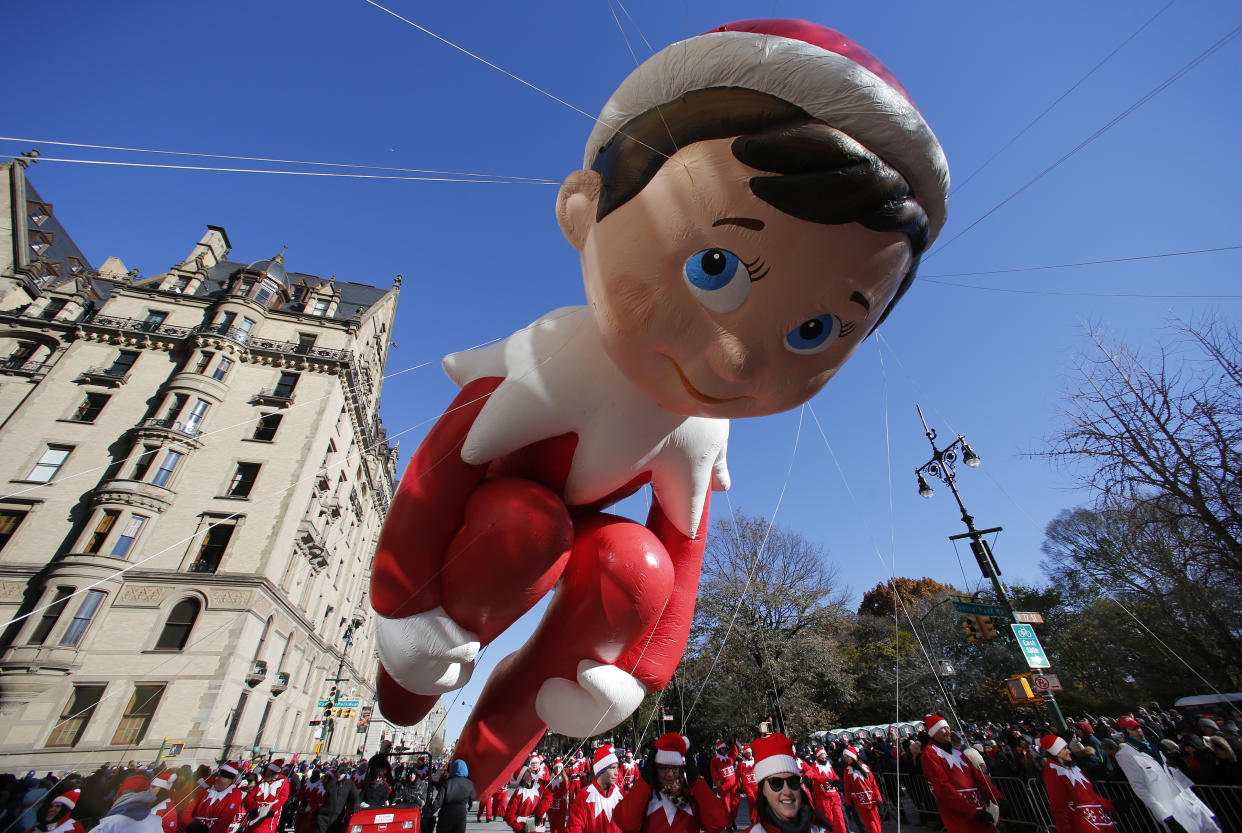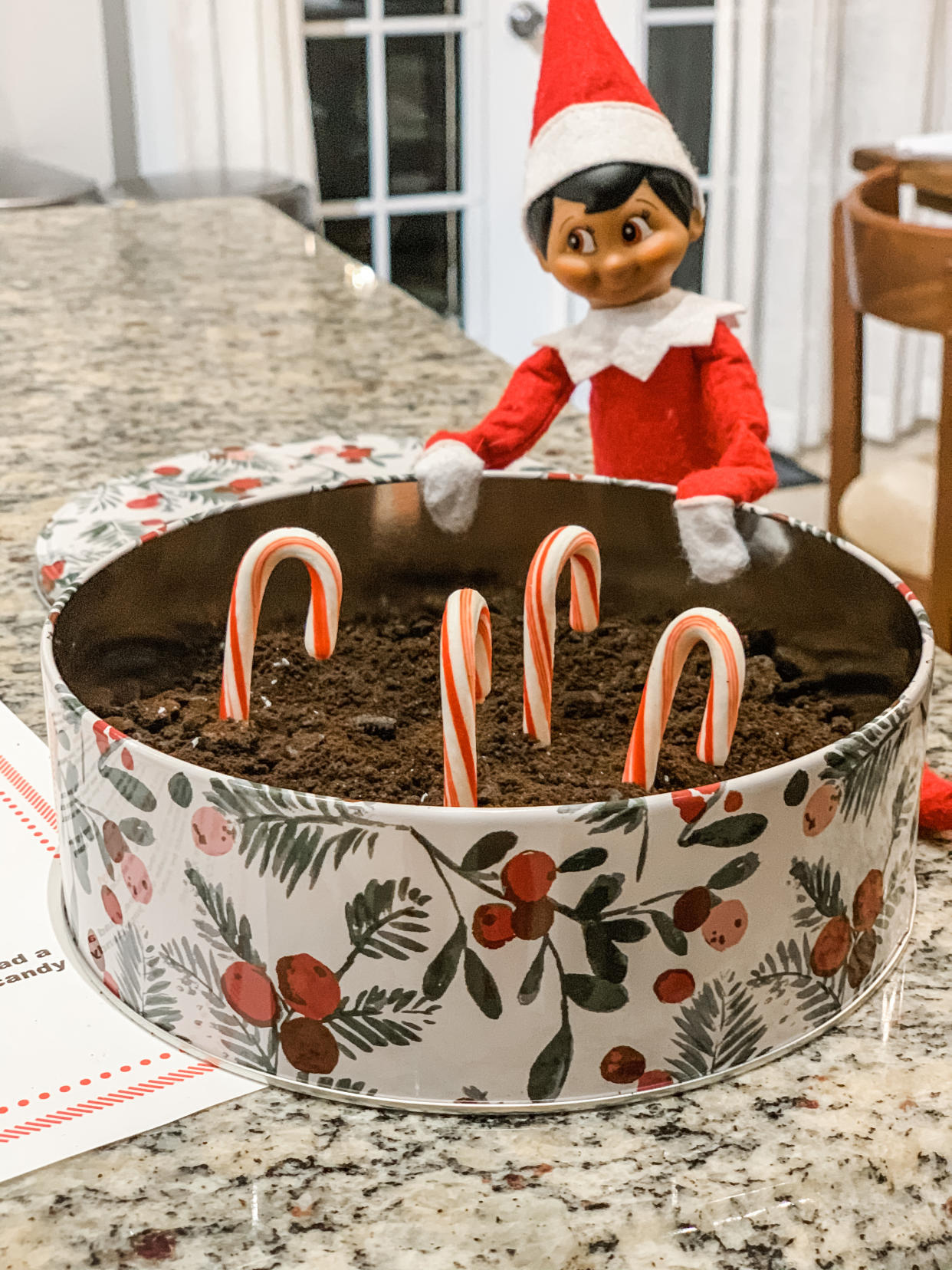Is Elf on the Shelf too stressful for kids? Why experts caution against using the holiday tradition to 'focus on punishment' or make children 'feel guilty'

This article was originally published on Nov. 22, 2021.
When the COVID-19 pandemic eliminated the possibility of spending Christmas 2020 with her son Grayson's beloved grandparents, Lauren Eggert embraced the "Elf on the Shelf" to make her child's holiday season as magical as possible.
A graphic designer and creative marketing director, Eggert put her skills to work and painstakingly designed 24 days of antics for Grayson's elf, who he named Sugar Cookie, to build the excitement leading up to Christmas Day.
"We had done Elf on the Shelf the two previous years, but I always ended up forgetting about it and completely dropping the ball," Eggert, who lives in Orlando, Fla., tells Yahoo Life.
Like many parents, Eggert saw the toy as just another thing to stress about during an already overbooked holiday season.
"But then, when he couldn't see his grandparents for Christmas," Eggert says, "I made it my mission to make his Christmas as magical as possible, and that meant Sugar Cookie was going to have to really bring it."

What is Elf on the Shelf?
Released in 2005, The Elf on the Shelf: A Christmas Tradition tells the story of a special holiday scout elf sent from the North Pole to encourage good behavior and report back to Santa whether a child has been naughty or nice: a simple twist on the classic "Santa knows" lore.
According to the now-iconic book, written by Carol Aebersold and daughter Chanda Bell, scout elves come down from the North Pole and stay in kids' homes from some time around Nov. 24, now known as the start of "Scout Elf Return Week," through Christmas Eve. Each night, the elves return to Santa and report on the day's events then come back. Each morning, children find their elf in a new place causing different mischief than the day before: That's the magic.
Since the book — and the elf that comes with it — debuted, the tradition's popularity has soared. According to the North Pole Press Room, maintained by Elf on the Shelf, more than 19 million scout elves and elf pets (furry animal companions for the elves) have been adopted in 17 countries across five continents over the years.

Can the tradition stress kids out?
Still, criticism of the Elf on the Shelf is wide and varied. The Atlantic columnist Katie Tuttle called the popular holiday activity a "marketing juggernaut dressed up as tradition," offering that one shouldn't "bully [their] child into thinking good behavior equals gifts." And, in Psychology Today, philosophy professor David Kyle Johnson called Elf on the Shelf a "dangerous parental crutch," which allows parents to disengage from the responsibility of healthy guidance and discipline in favor of threats from an inanimate object.
But is it really that big of a deal?
Michelle Tangeman, a Los Angeles, Calif.-based licensed marriage and family therapist who specializes in child behavior, says it is … kind of.
"It's really unfortunate that the Elf on the Shelf is being used as a way to manipulate and control behavior," she says. "I think the holidays should be a time to really focus on family and enjoying the holiday spirit."
Tangeman says when moms and dads lack the right tools, parenting sometimes becomes reactive. It's then that parents may use what she calls "default technologies," basically saying to a child, "if you don't do what I want you to do, something bad will happen."
The Elf on the Shelf and its vigilant ways would qualify as this type of method.
Instead, Tangeman encourages parents to rely on more positive and proactive behavior interventions, avoiding punishments like not receiving gifts on Christmas and rewarding kids when they exhibit behaviors parents want to see more of.
Eggert says she and her husband made the conscious decision early on not to communicate the "Santa knows whether you've been naughty or nice" message to their son when teaching him about Christmas.
"We didn't want it to be a weird surveillance thing," Eggert explains. "That seems like it would be really stressful for kids."
But when deciding to elf or not to elf, what's a parent to do?
Do focus on holiday magic
When Sugar Cookie showed up at Grayson's home, it wasn't about Grayson's behavior — it was just about the magic.
That's what Tangeman says is key.
"Separating out the magic of Elf on the Shelf from Christmas gifts contingent on behavior is important," she says. "If you're embracing the Santa story in your home, Santa is going to come and bring presents if your child has the belief in Santa, not based on whether or not your child displays good behavior."
When it comes to encouraging positive behavior, Tangeman counsels families to focus on what skill their child is lacking that is leading to an unwanted behavior, then working to strengthen their abilities in that area.
"Consider [correcting a 'bad behavior'] more of a teaching opportunity than focusing on punishment or trying to make the child feel guilty for engaging in that behavior," she says.

Don't make gifts contingent on good behavior
What happens when your child does misbehave, yet presents appear under the tree anyway?
"As parents, we want to be consistent," Tangeman says. "When you make the Christmas presents contingent on behavior, what association is your child creating with Christmas? I'd argue that it's not a positive one."
For Eggert, her "24 days of Sugar Cookie" experiment incorporated things she and her husband wanted their son to focus on in his daily life. For example, one day Sugar Cookie sent Grayson math problems to complete as well as moralistic lessons to help him learn to spread Christmas cheer. A different day, Sugar Cookie sent him on a mission to do something nice for someone he didn't know. Another, Sugar Cookie asked Grayson to help his mom with a household chore.
"We wanted to encourage life lessons and show him the elf was there to help him rather than as a threat that he wouldn't get presents on Christmas," says Eggert, "because that was never going to happen."
Eggert also decided to share the cheer and magic she created for her son with others by offering 24 days of ideas for parents looking to use their Elf on the Shelf to encourage positive life lessons, called "Sugar Cookie's Magical Moments."
Among the ideas in Eggert's kit is a Christmas card with instructions for kids to write a message to someone they love inside and mail it to them. She'll also include a calendar of pre-planned ideas, props and nightly text reminders to move that darn elf, because parents need all the help they can get during the holidays.
"I'm trying to be more thoughtful about Elf on the Shelf rather than just putting the toy on a chandelier and saying it's reporting back to Santa," says Eggert of her mission.
Tangeman says it's all in those (non-shameful) details.
"Separate your elf's magic from the disciplinary side of the story," she urges parents. "Don't attach punishment to the positive associations of Christmastime."
Wellness, parenting, body image and more: Get to know the who behind the hoo with Yahoo Life's newsletter. Sign up here.


